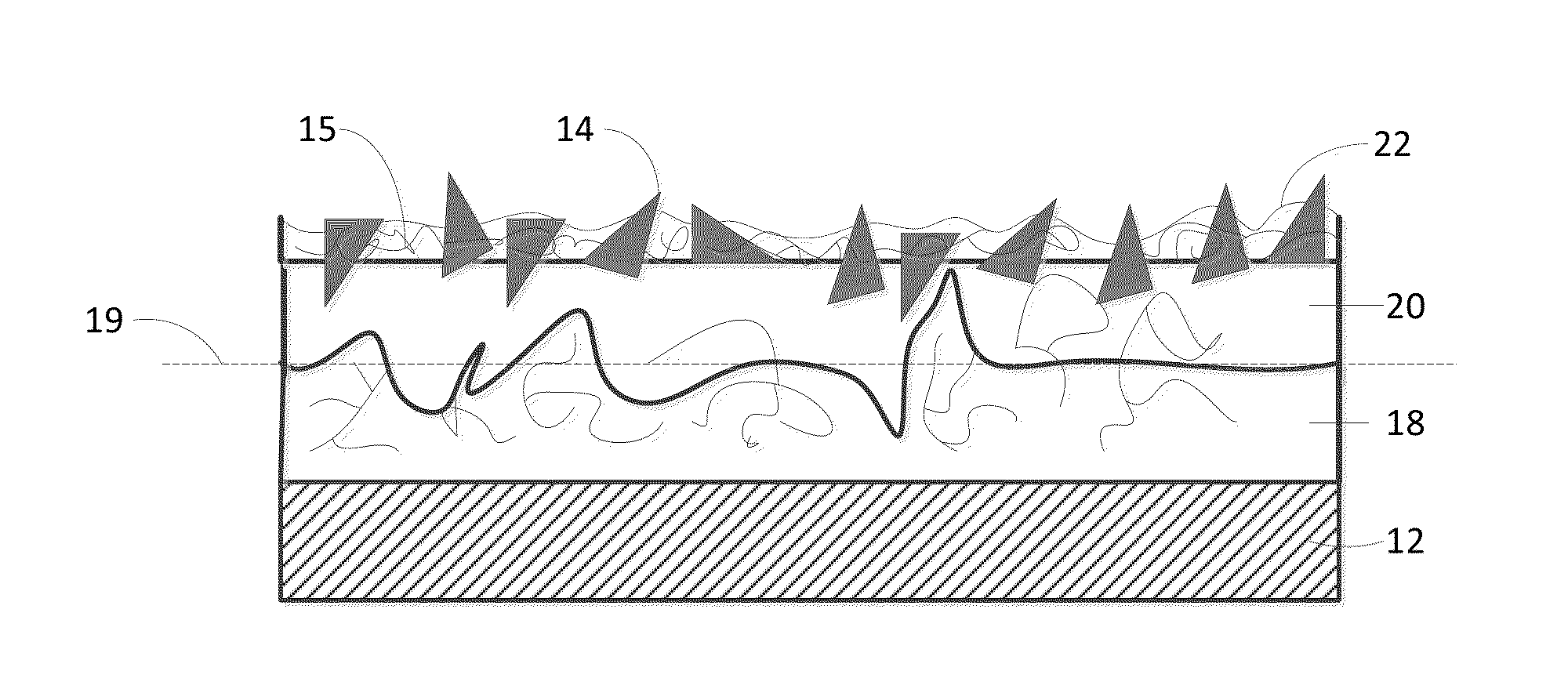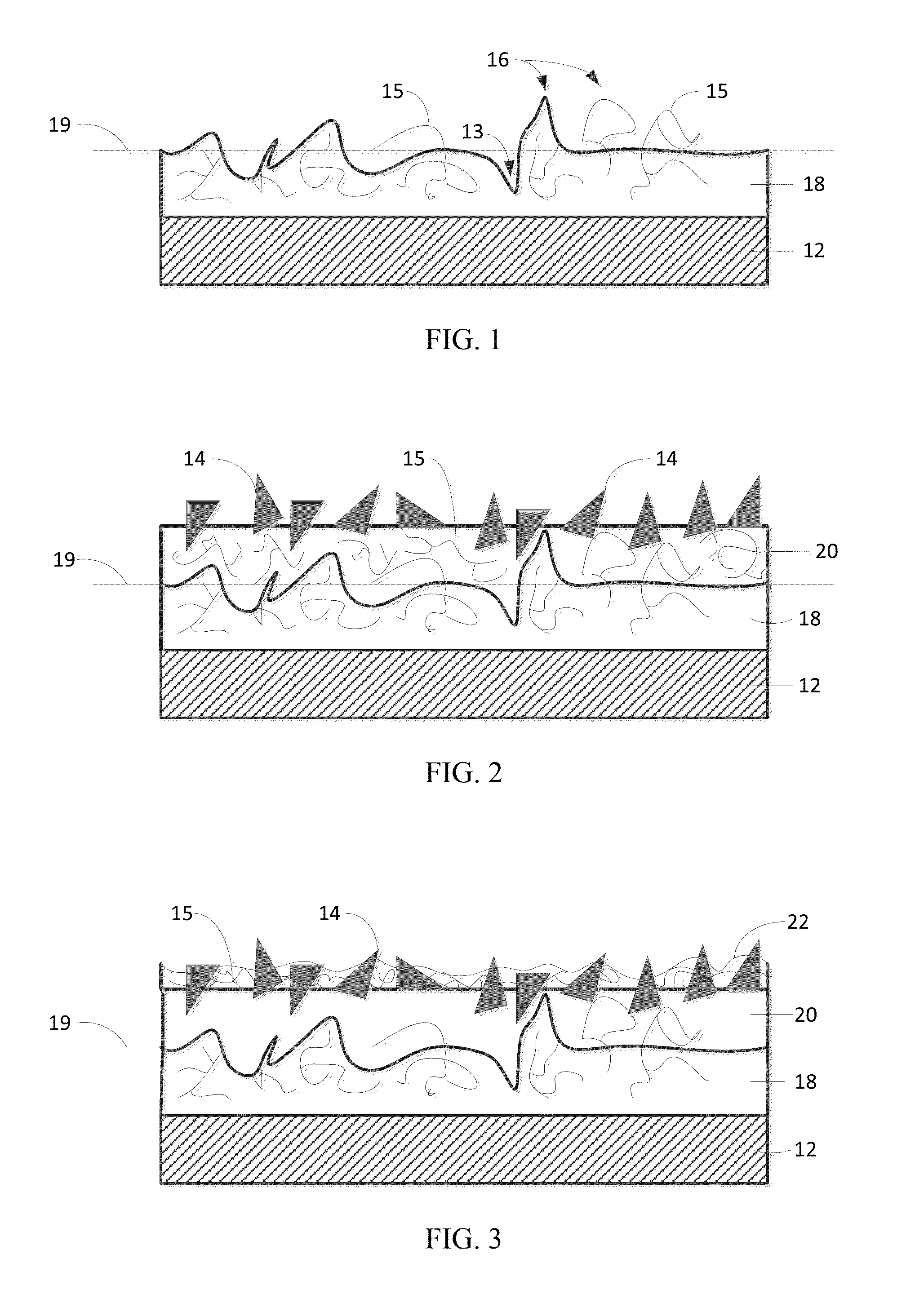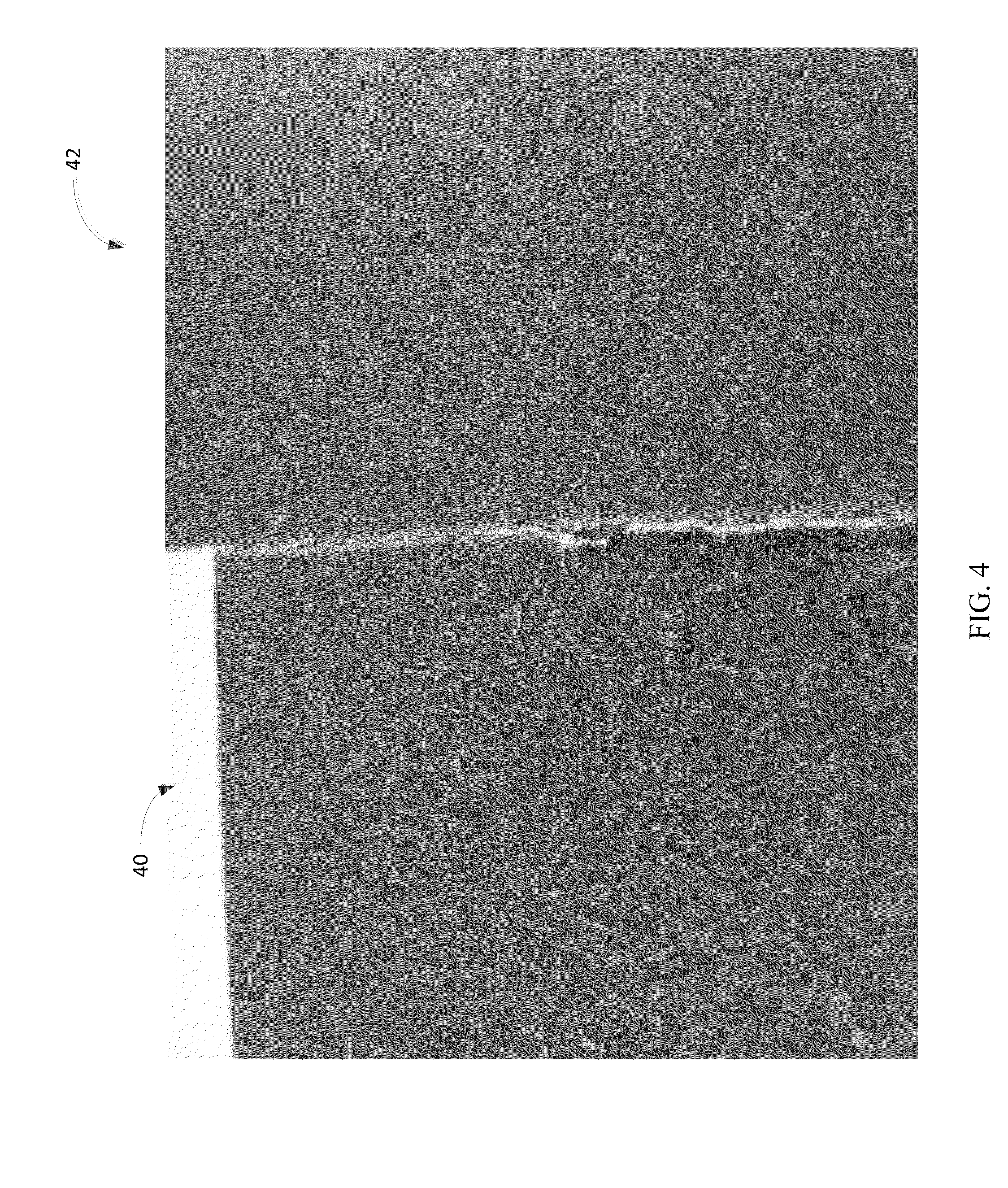Abrasive products having fibrillated fibers
a technology of fibrillated fibers and abrasives, which is applied in the direction of other chemical processes, metal-working equipment, chemistry equipment and processes, etc., can solve the problems of surface abrasion, low material removal rate, and material removal can be affected
- Summary
- Abstract
- Description
- Claims
- Application Information
AI Technical Summary
Benefits of technology
Problems solved by technology
Method used
Image
Examples
example 1
Investigating Different Kevlar® Pulp Forms
[0137]It is regarded that the best form of fibrillated fiber is one which disperses evenly within a polymer formulation such as, for example, phenolic resin or urea formaldehyde resin. Kevlar® pulp is generally available in three forms, shown in FIGS. as original pulp (FIG. 7A), 50% wet pulp (FIG. 8A), and pre-opened pulp (FIG. 9A). These forms of Kevlar® pulp were investigated to determine which form provides better dispersion into a Phenolic mix.
[0138]Original pulp served as the baseline for dispersion measurement in a phenolic resin mix.
[0139]50% wet pulp does not disperse well in a phenolic mix using Method 2 described below. Even after mixing, the pulp remained clumped in the pellet form in which it originally came.
[0140]Using Method 2 described further herein pre-opened pulp dispersed well into a phenolic mix. Further, draw down tests (as also described further herein) showed more consistent distribution and less clumping with pre-open...
example 2
Kevlar® Pulp and Phenolic Resin Mix Adhesion
[0141]To assess the compatibility of Kevlar® and Phenolic resin, a phenolic resin formulation (typically that used for a make coat) was made and a draw down was performed on a piece of Kevlar® fabric. The Phenolic resin diffused into the Kevalr fibers, showing good adhesion to the Kevlar® fabric.
example 3
Dispersing Kevlar® Pulp Fibers in Phenolic Resin
[0142]Establishing that Kevlar® and Phenolic resin adhere well to one another, experiments proceeded to determined which method is best, or most feasible, for dispersing Kevlar® pulp fibers into the Phenolic resin mix. A target coating viscosity of 5000 cps at 100 C using spindle #2 at 12 rpm is typically desired. However, due to the small lab scale mixes (300 grams) of the following examples, target viscosity was measured with spindle #64 at 12 rpm. It should be understood that a target viscosity range is preferably between 200-30,000 cps, more preferably between 2,500-20,000 cps, more preferably between 4,000-10,000 cps, and more preferably between 4,600-5,200 cps. The three methods investigated included:
[0143]Method 1 investigated adding the Kevlar® pulp to the standard Phenolic resin mix after Wollastonite has been added and the viscosity of the mix has been adjusted (i.e. lowered) to a target coating viscosity of 5000 cps at 100 C...
PUM
| Property | Measurement | Unit |
|---|---|---|
| length | aaaaa | aaaaa |
| length | aaaaa | aaaaa |
| diameter | aaaaa | aaaaa |
Abstract
Description
Claims
Application Information
 Login to View More
Login to View More - R&D
- Intellectual Property
- Life Sciences
- Materials
- Tech Scout
- Unparalleled Data Quality
- Higher Quality Content
- 60% Fewer Hallucinations
Browse by: Latest US Patents, China's latest patents, Technical Efficacy Thesaurus, Application Domain, Technology Topic, Popular Technical Reports.
© 2025 PatSnap. All rights reserved.Legal|Privacy policy|Modern Slavery Act Transparency Statement|Sitemap|About US| Contact US: help@patsnap.com



